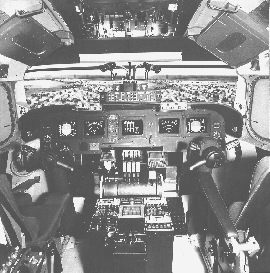
Ian Sheppard/LONDON
A Dutch national aerospace laboratory (NLR) study has concluded that workload does not increase when a pilot is given responsibility for separation assurance in a "free flight" air traffic control environment.
Ronald van Gent, NLRproject leader, says that the conclusion surprised the research team. "We anticipated a dramatic increase in workload," he admits. The conclusion held good even with traffic density increased to levels which are never likely to be experienced.
The exercise consisted of off-line simulations and a safety analysis study, followed by man-in-the-loop flight simulations.
In the tests, eight crews each flew 18 sorties, all of 20min duration, with traffic densities ranging up to three times the average encountered in European airspace. A modification to the simulator's navigation display allowed other traffic to be superimposed.
Eye and head movements of crewmembers were tracked, along with their interaction with the avionics. Their opinions were recorded, with the majority accepting the new concept and testifying that workload was unchanged.
Each aircraft had its own conflict detection and resolution advisory modes, the best of which was selected. Known as "voltage potential", this involves the real-time assessment of conflict possibility and calculation of an advised track, ground and vertical speed.
Conflict severity is used as a measure of the incursion of the "own ship" aircraft into an another aircraft's "protected zone". An avoidance vector is added to the minimum distance vector to give the advisory based on maintaining the protected zone. The concept has been tested using the NLR's Traffic Organisation and Perturbation Analyzer, which resulted in the NLR team's conclusion that free flight with airborne separation assurance is "at least as safe" as the current air traffic environment.
The study was part-funded by the US Federal Aviation Administration and undertaken in conjunction with NASA. The US organisations are now using the results to advance their own free flight definition work.
Van Gent says that the second stage of the project is being set up to investigate issues such as "mixed equippage". This is where various percentages of traffic are assumed to be equipped for ADS-B [Automatic Dependent Surveillance - Broadcast].
Meanwhile, an extra variable will be added to enable aircraft to see others using "new formats" based on existing or new secondary surveillance-type technologies.
Phase two will also fine tune the voltage potential rule, adding additional filters to prevent the "sudden" reactions to conflicts met in phase one.
Source: Flight International























